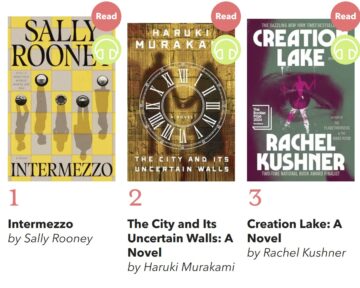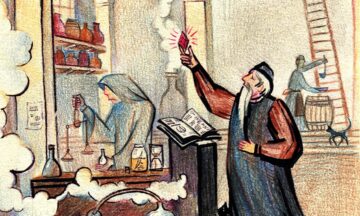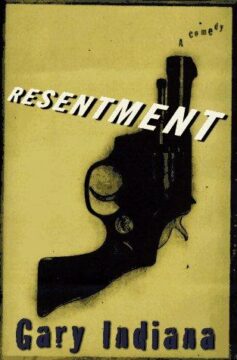Freya Johnston at Literary Review:
 Does anything ever truly happen in the Messiah? This extraordinarily popular tripartite choral work, first performed in Dublin in 1742, consists almost entirely of saying rather than of doing. Circling around the redemptive power of Christ, it combines declarations with questions, prophecies, injunctions and exhortations (‘Who is this King of Glory?’, ‘Behold, I tell you a Mystery’, ‘Daughter of Sion, shout’, ‘He shall speak’). Full of urgency, tribulation and momentum, the Messiah nevertheless lacks a plot – unless we class the perennial human emotions of hope and fear, and the movement between the two, as dramatic action.
Does anything ever truly happen in the Messiah? This extraordinarily popular tripartite choral work, first performed in Dublin in 1742, consists almost entirely of saying rather than of doing. Circling around the redemptive power of Christ, it combines declarations with questions, prophecies, injunctions and exhortations (‘Who is this King of Glory?’, ‘Behold, I tell you a Mystery’, ‘Daughter of Sion, shout’, ‘He shall speak’). Full of urgency, tribulation and momentum, the Messiah nevertheless lacks a plot – unless we class the perennial human emotions of hope and fear, and the movement between the two, as dramatic action.
The oratorio is sometimes described as a commentary, but it is a compilation of sources rather than a work of analysis, its text splicing words (along with the occasional paraphrase) from the King James Bible. The passage with which it begins comes from the fortieth chapter of the Book of Isaiah, where the prophet – who has been denouncing the greed and moral turpitude of Hezekiah, king of Judaea – suddenly moves into a different register entirely.
more here.
Enjoying the content on 3QD? Help keep us going by donating now.

 Large numbers of
Large numbers of  Well, the most obvious answer to this question is Sally Rooney’s latest novel, Intermezzo. Every Rooney book is a major publishing event, and this latest offering—which centres on the fraught relationship between two Irish brothers—has received rave reviews almost across the board. NPR
Well, the most obvious answer to this question is Sally Rooney’s latest novel, Intermezzo. Every Rooney book is a major publishing event, and this latest offering—which centres on the fraught relationship between two Irish brothers—has received rave reviews almost across the board. NPR  Last week, technology giants Google and Amazon both unveiled deals supporting ‘advanced’ nuclear energy, as part of their efforts to become carbon-neutral.
Last week, technology giants Google and Amazon both unveiled deals supporting ‘advanced’ nuclear energy, as part of their efforts to become carbon-neutral. Even as Nehru proclaimed the moral superiority of India for taking a stance against colonialism in all forms, he oversaw India’s colonial occupation of Kashmir. In Kashmir, Nehru said, ‘democracy and morality can wait’.
Even as Nehru proclaimed the moral superiority of India for taking a stance against colonialism in all forms, he oversaw India’s colonial occupation of Kashmir. In Kashmir, Nehru said, ‘democracy and morality can wait’. I
I LAST FALL, I was rereading Resentment: A Comedy (1997) on the train on the way to a screening of Sweet Smell of Success (1957), the most perverted Hays Code movie I know, and came upon a passage I knew was coming, where a man is, to put it mildly, fisted to death by the novel’s stuttering psychopath. I began to feel physically ill. I made it through an hour of Sweet Smell before having to head home because I was still feeling ill. Probably it was just something I ate, I told myself, willfully ignoring how deeply the viciousness, the casual cruelty Indiana put on display, had scared me.
LAST FALL, I was rereading Resentment: A Comedy (1997) on the train on the way to a screening of Sweet Smell of Success (1957), the most perverted Hays Code movie I know, and came upon a passage I knew was coming, where a man is, to put it mildly, fisted to death by the novel’s stuttering psychopath. I began to feel physically ill. I made it through an hour of Sweet Smell before having to head home because I was still feeling ill. Probably it was just something I ate, I told myself, willfully ignoring how deeply the viciousness, the casual cruelty Indiana put on display, had scared me. Hadn’t it been dimming for years? Last weekend the Atlantic ran a juicy piece about the chaos and despair inside the Trump campaign. It should have reminded me more than it did at the time of the hundreds of similar articles published during his first term and during the 2024 campaign. He’s really cracking up this time, he’s lashing out at everyone in his orbit, he’s lost the thread. And then his defeat in 2020, his exile and prosecution after January 6, his increasing incoherence and paranoia, flagged even by his former staff. (“Once Top Advisers to Trump, They Now Call Him ‘Liar,’ ‘Fascist,’ and ‘Unfit’” went the title of the Times’s collection of interviews with the likes of John Kelly, James Mattis, and Mike Pence.) The pattern is so clear in retrospect: these cycles of marginalization and humiliation would have defeated anyone else, but Trump—through some combination of unprecedented luck and intuitive political genius—kept reemerging, impossible to count out no matter how outré the misdeed. Yesterday was a triumph greater than 2016. It wasn’t a fluke. Trump is America’s choice.
Hadn’t it been dimming for years? Last weekend the Atlantic ran a juicy piece about the chaos and despair inside the Trump campaign. It should have reminded me more than it did at the time of the hundreds of similar articles published during his first term and during the 2024 campaign. He’s really cracking up this time, he’s lashing out at everyone in his orbit, he’s lost the thread. And then his defeat in 2020, his exile and prosecution after January 6, his increasing incoherence and paranoia, flagged even by his former staff. (“Once Top Advisers to Trump, They Now Call Him ‘Liar,’ ‘Fascist,’ and ‘Unfit’” went the title of the Times’s collection of interviews with the likes of John Kelly, James Mattis, and Mike Pence.) The pattern is so clear in retrospect: these cycles of marginalization and humiliation would have defeated anyone else, but Trump—through some combination of unprecedented luck and intuitive political genius—kept reemerging, impossible to count out no matter how outré the misdeed. Yesterday was a triumph greater than 2016. It wasn’t a fluke. Trump is America’s choice. Political scientists have thought carefully about the kind of situation we’re in. Back in 2011, Daron Acemoglu and James A. Robinson, who just won the Nobel Prize in Economics, wrote a paper together with Ragnar Torvik titled “
Political scientists have thought carefully about the kind of situation we’re in. Back in 2011, Daron Acemoglu and James A. Robinson, who just won the Nobel Prize in Economics, wrote a paper together with Ragnar Torvik titled “ Detecting a graviton — the hypothetical particle thought to carry the force of gravity — is the ultimate physics experiment. Conventional wisdom, however, says it can’t be done. According to one infamous estimate, an Earth-size apparatus orbiting the sun might pick up one graviton every billion years. To snag one in a decade, another
Detecting a graviton — the hypothetical particle thought to carry the force of gravity — is the ultimate physics experiment. Conventional wisdom, however, says it can’t be done. According to one infamous estimate, an Earth-size apparatus orbiting the sun might pick up one graviton every billion years. To snag one in a decade, another  Back in 2016, the whiff of aberration hung over Trump’s success. His opponents could claim that his victory was some strange historical fluke. They could put it down to foreign interference or to Russian hackers. Political scientists confidently pronounced that he represented the final, Pyrrhic victory of a declining electorate—the last, desperate stand of the old, white man.
Back in 2016, the whiff of aberration hung over Trump’s success. His opponents could claim that his victory was some strange historical fluke. They could put it down to foreign interference or to Russian hackers. Political scientists confidently pronounced that he represented the final, Pyrrhic victory of a declining electorate—the last, desperate stand of the old, white man.